The NASA/ESA/CSA James Webb Space Telescope has successfully completed its final tests and is being prepared for shipment to its launch site at Europe’s Spaceport in French Guiana.
Tests were carried out at Northrop Grumman’s facilities in California, USA, to ensure that the complex space science observatory will operate as designed when in space. Shipment operations have now begun, including all the necessary steps to prepare Webb for a safe journey through the Panama Canal to its launch location in French Guiana, on the northeastern coast of South America.
Once Webb arrives at Europe’s Spaceport, launch processing teams will prepare and configure the observatory for flight. This involves post-shipment checkouts and carefully loading the spacecraft’s propellant tanks with fuel. Then, engineering teams will mate the observatory to its launch vehicle, an Ariane 5 rocket provided by ESA and make a ‘dress rehearsal’, before it rolls out to the launch pad two days before launch.
The upper stage of the Ariane 5, which will carry Webb to space later this year, is already on its way to Europe’s Spaceport. Overnight on 17 August 2021, the upper stage was transported in its container from ArianeGroup in Bremen to Neustadt port in Germany. Here it boarded the MN Toucan vessel alongside other Ariane 5 elements loaded in various European harbours to continue its journey to Kourou, French Guiana.
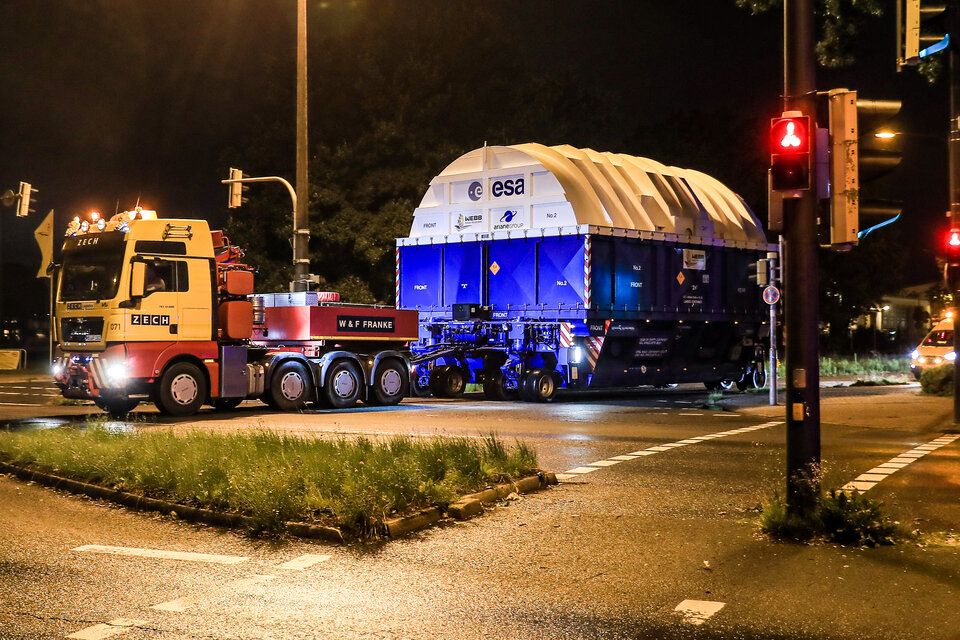
The James Webb Space Telescope is an amazing feat of human ingenuity – a mission with contributions from thousands of scientists, engineers, and other professionals from more than 14 countries and 29 states, in nine different time zones.
Working with partners, ESA was responsible for the development and qualification of Ariane 5 adaptations for the Webb mission and for the procurement of the launch service. Besides that, ESA is contributing the NIRSpec instrument and a 50% share of the MIRI instrument, as well as personnel to support mission operations.
“We are glad about the completion of all tests for Webb and thank all the teams for their excellent work. We are really excited that all the items necessary for the launch are now coming together at Europe’s Spaceport,” said Günther Hasinger, ESA Director of Science.
After launch, Webb will undergo an action-packed six-month commissioning period. Moments after completing a 26-minute ride aboard the Ariane 5 launch vehicle, the spacecraft will separate from the rocket and its solar array will deploy automatically.
Immediately after Webb separates from the rocket, ESA’s tracking station network, ESTRACK, will follow the Early Orbit Phase operations using its Malindi ground station in collaboration with NASA’s station network.
Webb will take one month to fly to its intended orbital location in space nearly one million miles away from Earth, slowly unfolding as it goes. Sunshield deployments will begin a few days after launch, and each step can be controlled expertly from the ground, giving Webb’s launch full control to circumnavigate any unforeseen issues with deployment.
Once the sunshield starts to deploy, the telescope and instruments will enter shade and start to cool over time. Over the ensuing weeks, the mission team will closely monitor the observatory’s cooldown, managing it with heaters to control stresses on instruments and structures.
In the meantime, the secondary mirror tripod will unfold, the primary mirror will unfold, Webb’s instruments will slowly power up, and thruster firings will insert the observatory into a prescribed orbit.
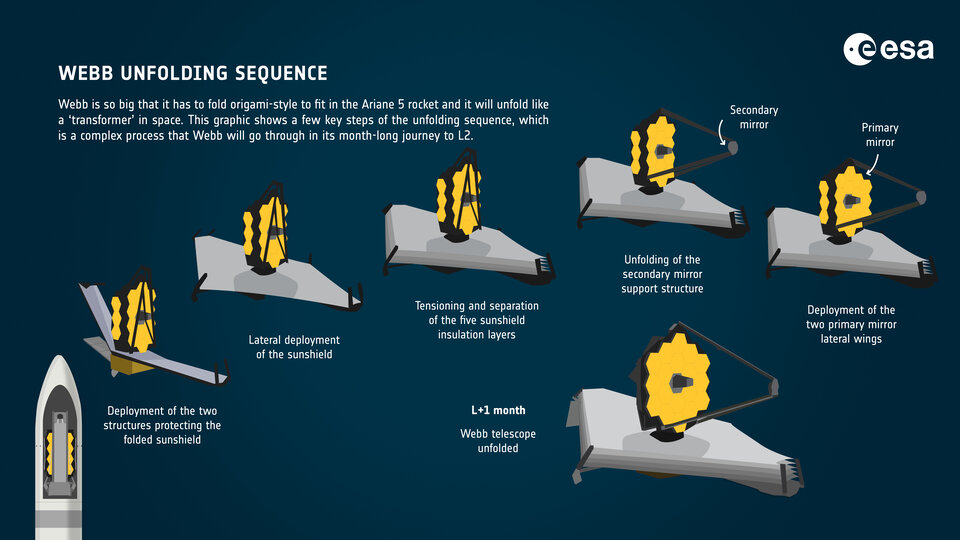
Once the observatory has cooled down and stabilised at its frigid operating temperature, several months of alignments to its optics and calibrations of its scientific instruments will occur. Scientific operations are expected to commence approximately six months after launch.
‘Flagship’ missions like Webb are generational projects. Webb was built on both the legacy and the lessons of missions before it, such as the NASA/ESA Hubble Space Telescope, and it will in turn provide the foundation upon which future large astronomical space observatories may one day be developed.
Webb is the next great space science observatory, designed to answer outstanding questions about the Universe and to make breakthrough discoveries in all fields of astronomy. Webb will see farther into our origins – from the formation of stars and planets, to the birth of the first galaxies in the early Universe.
Webb is an international partnership between NASA, ESA and the Canadian Space Agency (CSA).
SOURCE : ESA









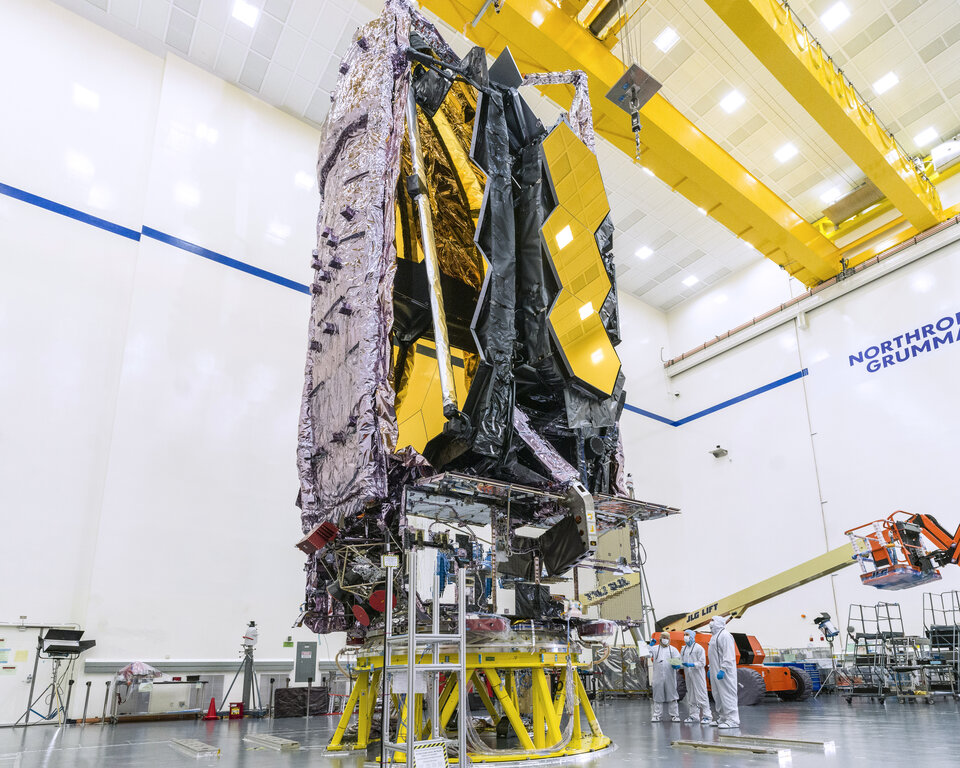
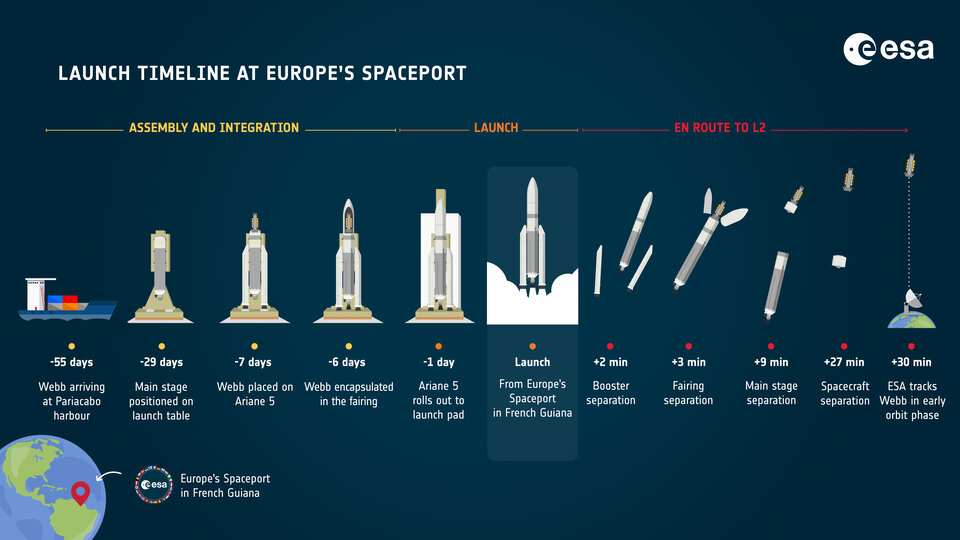
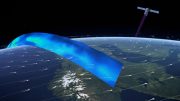
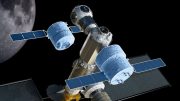


Be the first to comment on "Webb completes testing and prepares for trip to Europe’s Spaceport"